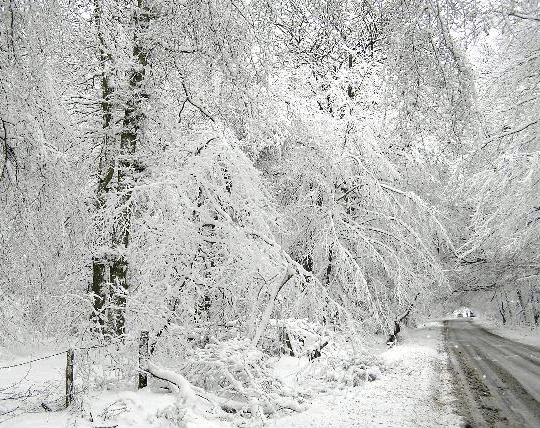

On this page
Researching our past is both fascinating and frustrating. Although artefacts and dating methods give us facts to interpret we cannot always be sure of our conclusions.
Documentation was dependent on those who could write and with the inclination to do so. There was the problem of actually gaining the information when communication was by courier and surely politics played a part like they do today.
Much documentation comes from the writings of monks, so what slant might they have put on history around the time of Henry VIII for example. Our language is also subject to continual change.
In trying to discover the origin and history of local villages our researches have uncovered many documents, extracts of which are included either independently or as part of a report herein - many are quite clearly reliable.
It is a jigsaw and many pieces are missing but there is a basis of knowledge and the more we research the more detailed the picture becomes.
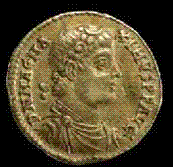
by Ian Kelloway
We have no record of Lacey Green's existence prior to the 1600`s so where to start?
Whiteleaf is the place of the earliest man-made structure to be found in Buckinghamshire. A Neolithic burial mound with one very important male buried inside, whose bones have been radiocarbon dated and it was found that he died between 3695 - 3645 BC. Who was he? We have no idea.
In extensive test pits and trenches dug recently across the hill at Whiteleaf, flint flakes from the Mesolithic period were discovered, so man has been in this area for a very long time.
Also a Roman 'votive offering' in the form of a bronze alloy leaf was found. A first for Buckinghamshire and it suggests some sort of temple or shrine was once here.
Link: History of Princes Risborough - (See page 8)
In Risborough are the two ancient routes of the Icknield Way. The Upper Icknield Way which has been incorporated into the Ridgeway Path is thought to be a Neolithic route way, although recent excavations during construction of the Aston Clinton by-pass could not find any evidence of this route and some experts are suggesting that this route way was a much wider freeway and was not tracked until maybe as late as the late Saxon period.
The Lower Icknield way is a Roman road but whether it was in existence prior to this is in question. A very good example of this Roman road continues into the fields at the end of Mill Lane in Chinnor.
Nearer to Lacey Green a flint axe head was found close to the area known as Promised Land.
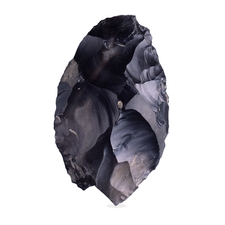
Grims Ditch, thought to be an Iron Age land boundary, can be seen very clearly at the bottom of Kiln Lane and again at the bottom of the village.
Recent excavations in Kiln Lane and in the school grounds and also some geo-physics in the fields at Stocken Farm suggests that it was once joined up but has been lost over time.
There are two Roman villas at Saunderton sitting very close to one another, one thought to be earlier than the other. Nearby there is a Saxon cemetery.
The Black Hedge is one of oldest recorded boundaries in England dating back to 903 AD which describes a Saxon estate.
This boundary is the Monks Risborough Ecclesiastical Parish boundary.
From 1894 to 1933 it was also the Monks Risborough civil parish boundary, but the civil parish was incorporated with Princes Risborough in 1933.
We have yet to discover how Lacey Green came to be and how it got its name but Woodway leading up from Princes Risborough to Lacey Green is thought to be a Saxon name meaning, perhaps obviously, "a route up to the woods" so perhaps Lacey Green simply became a clearing in the woods originally.
Report by Joan West
Much speculation has been forwarded regarding any connection between the name "Lacey" and the name of "Lacey Green".
The first record of the name in Britain was in 1066 AD when two brothers arrived with William the Conquerer. It was an ancient French name, derived from the village of "Lassy" in Calvados, Normandy. Bearing in mind that words were written just how they sounded to the scribe at the time, this became varied from Lassy to Lascy, Laci, Leacy, Lacey, de Lacey, d'Arcy, Darcy and no doubt others over time. The two brothers were rewarded with lands mentioned in the Domesday Book. They and later generations were rewarded by the Crown until they owned both Yorkshire and Lancashire, southern Wales and across the borders into Herefordshire and beyond, another branch being extensively settled in Ireland. There were many famous people of these names recorded all over the country over the centuries. In later centuries the French sounding names being largely dropped, leaving Lacy and Lacey predominating.
Sir Peter de Lacey is worth mentioning. In 1343 King Edward 3rd had settled the estate of Princes Risborough on his son Edward, Prince of Wales, known as "The Black Prince" because of his black armour. Sir Peter de Lacey was his clerk and receiver general here in the manor of Princes Risborough. The stud farm where the war horses were bred was here. Lacey Green was part of this manor.
There were many letters referring to Princes Risborough and the stud farm estate but nothing specifically relating to Leasey Green as it may have been called.
I did find the following in the Black Princes Register at the Records Office, Chancery Lane.
Folio number 21, mentioning "Lulleslede" which would have meant Loosley.
1351 November 20th From London,
Order to all the Prince`s stewards, keepers of fees, their lieutenants, and others, - in pursuance of a finding by the Prince`s Council, after examination of charters produced by the abbot and Convent of Nuttels, that the abbot and convent hold all the land called Spene in the Prince`s Manor of Risborough of the gift and grant of Richard de Spene and by confirmation of Henry, his son, and William de Rodewill, in frankal mein, quit of homages, releifs, suits of court, and all other exactions and demands, except a yearly rent due from the said land and that they also hold of the grant and confirmation of Walter Giffard, Earl of Buckingham, the church of Risbergh and the tithes of the demesnes and all other appurtenances, together with the wood called "Lullulede"(Looseley), quit and free of all exactions and secular services, to refrain henceforth from demanding suit or other services for the said lands and tithe, unless perchance the abbot and convent hold something else of the Prince which is not comprised in the said charters.
Legal documents don't appear to have improved that much.
A more typical reference was as follows:
Folio 279 F1
1364 Order of Henry Aillwyn, reeve of the Prince`s manor of Risborough, to cause the garret over the gate of the Prince`s park to be demolished because of it`s poor condition.
Research has not found any direct connection between Sir Peter and Lacey Green.
Old maps refer to Leasey Green. Leasey meaning grassy. Some old documents do call it Laceys Green. But one must always consider that all words were written how the writer thought they sounded. The first houses, all farmhouses, seem to date from mid 17th century. At that time the area around consisted primarily of an extensive common, belonging to Princes Risborough where the cattle were brought up to graze; scrub, trees and a few clearings for the little farmsteads. Cottages probably sprang up for those hoping to get some work there around that time. Did Leasey Green get corrupted to Lacey Green because of a Lacey who lived here?
Then of course the village was renowned for its extensive Lace making. in the 19th century. Was it simply a colloquialism that stuck? Could it really be that simple? Facts have not yet established the exact answer.
Extracts from:
"The History and Antiquities of the County of Buckingham",
Vol II, Pages 426-440 by George Lipscombe.
Published by J & W Robins, London. 1847.
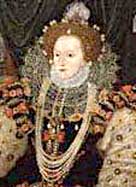
Queen Elizabeth I, soon after her accession by letters patent, dated 1 July 1558, recited that by other letters dated 10 May she had granted to Francis Pigot, then her servant for his faithful services, certain demensne, lands, meadows and pastures, called 'The Demesnes Of The Manor Of Princes Risborough' from Michaelmas then next for 21 years to the said Francis Pigot. And the Queen now demises all the before mentioned premises, for the better support of Elizabeth, widow of the said Francis Pigot, and in consideration of his faithful services, to the said Elizabeth, for 21 years from the date at the annual rent of thirteen pounds, twelve shillings and tuppence farthing.
In 1577 Queen Elizabeth by patent,
reciting her demise to Elizabeth Pigot, widow,
granted her reversion in the premises to Thomas Cornwallys esq, one her gentlemen pensioners, from the determination of the lease of Elizabeth Pigot for 50 years at the same rent.
Separate mention is made of the woods, and quotes the statute of Henry VIII for the preservation of woods
to preserve all great trees, saplings of oak and 12 staddels in every acre'.
In 1567, the Queen: in order to preserve certain woods belonging to the Crown and for £26-3-0d (twenty-six pounds three shillings) per annum
demised to William Wyndsor esq. King`S Wood, Smallridge Wood, and Stockynges, parcel of the Manor of Princes Risborough for 21 years.
In 1582 the Queen:
demised to Edward Kempton, merchant tailor of London, Kings Wood, of the extent of 139 acres, Smalridge Wood of 15 acres, and the woods and underwoods called Stockings, in the Manor of Princes Risborough, for 21 years from Michaelmas the ensuing at £13-6-8d (thirteen pounds six shillings and eight pence) per annum.
In 1594 Queen Elizabeth:
in recompense of all sums of money due to captain David Powell, deceased, for his services in the wars of France, and in higher and lower Germany, and at the request of Jane Powell, his widow, demises to Henry Best, all the woods, underwoods and woodland called Stockings containing 60 acres within the Manor of Princes Risborough (and parcel of that Manor assigned to the Queen before her accession) from lady day 1605, for 31 years at the same rent. At present let to Robert Sandys under the Exchequer Seal 24 July 1583 for 21 years.
Situated in the N.W. Part of the town (in a lane beside the church), it was for many years the property of the family of Penton of Hampshire. The remains of the mansion are near the churchyard.
Queen Elizabeth I called upon Mr. Penton when Her Majesty visited Hampden pre 1600AD.
Henry Penton esq. the last of the family who held the estate, was a native of Winchester. He was educated in the college there and afterwards removed to Clare Hall Cambridge. He represented Winchester in parliament and held the office of letter carrier to His Majesty, - a lucrative sinicure.
In Lord North`s administration he was made one of the lord commissioners of the admiralty for several years. He married first Anne, eldest of the two daughters of the recorder of Canterbury John Knowles esq. but they had no issue.
A separation by consent having ensued and she dying in 1806 he married Catherine, daughter of Peter Judd, Serjeant-at-Mace to the Corporation of Stratford Upon Avon, by whom he had several children.
He died in 1808. The widow married in 1812 Captain Welley of the 2nd Royal Regiment of Lifeguards, son of Sir William Wilby Bart.
Mr Penton`s estate in Risborough was afterwards sold to Mr.Thomas Grace of Aylesbury, and in 1813 was purchased by the Rt. Hon. Lord George Augustus Henry Cavendish (afterwards Earl of Burlington) together with a portion of the tithe in the middle hamlet of Lacey Green, situated between the tracks called the Upper and Lower Icknield Way included in the Manor Of Wardrobes, Stocken Farm, Lacey Green, Loosley Row and Culverton, constisting of about 1560 acres.
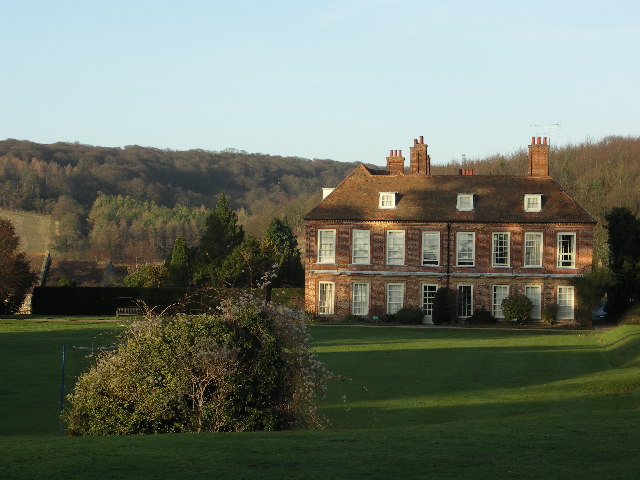
1500ish 1st Lord Andrew Windsor bought the estate.
1509 Knighted Sir Andrew K.B. at the coronation of Henry VIII. Was Lord of the Manor of Bradenham and Keeper of the Wardrobe of Henry VIII. He had several children.
1513 Fought with Henry VIII at the Battle of the Spurs against the French and was then made a lord.
1543 Died and buried at Hounslow.
1529 - 1536 William Windsor, son of Sir Andrew was M.P. in the "Reformation" parliament. Sir William Windsor made K.B. when Anne Boleyn was crowned.
1537 He was Sherriff of Buckinghamshire.
1543 He was made 2nd Lord on the death of his father.
He built the manor house at Bradenham and added the North chapel to the church.
1553 He was prominent in proclaiming Queen Mary.
1558 Died and buried at Bradenham
1557 3rd Lord Edward, son of Lord William had accompanied King Philip (Queen Mary`s husband) to the Siege of St.Quintin and there distinguished himself. 2 Battle of St Quentin
1566 Entertained Queen Elizabeth I on her return from Oxford.
1574 He died in spain. His body is buried at Liege, but his heart was buried under his fathers tomb at Bradenham. He willed almshouses to be built at Bradenham but there is no record of this being done.
1601 Lord Windsor, grandson of William was Steward of Wycombe.
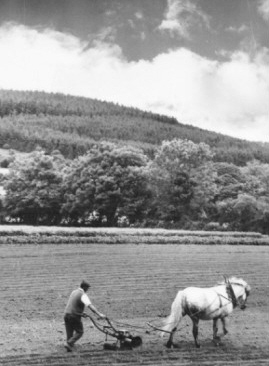
Stocken Farm, Lacey Green in the upper hamlet of Princes Risborough was given to Elizabeth I by her brother before she came to the throne.
1558 May - A close of wood and pasture called Stocking was let to Francis Pigot for his faithful services.
1558 July - Stocking was let to Elizabeth Pigot, the widow of Francis Pigot
1567 Stockynges, Kingswood & Smallridge wood demised to William Wyndsor esq.
1577 Stockings let to Thomas Cornwallys esq. one of her gentlemen pensioners.
1582 Kingswood 139 acres, Smallridge woods 15 acres and the woods and underwoods of Stockings
1594 Queen Elizabeth in recompense of all the sums of money due to captain David Powell, decd. For his services in the wars and at the request of Jane Powell, his widow, demises to Henry best all the woods, underwoods and woodland called Stockings containing 60 acres within the Manor Of Princes Risborough.
Pre 1600 to 1808 the Penton family were lords of the Manor of Princes Risborough
1670 Stocken farmhouse built (estimate) benchmark at 700 feet above sea level
1781 let to Jacob Janes
1791 let to William Palmer
1797 let to Thomas Dell
1808 death of Henry Penton esq. Manor estate sold to Mr.Thomas Grace
1813 Manor estate sold to Lord George Henry Cavendish (later Lord Burlington)
1814 - 1826 let to Ann Dell, widow of Thomas Dell
1827 James Dell applies to be admitted to the Manor at bequest of Ann Dell
1827 let to James Dell, grandson of Ann Dell
1830 bought by Charles Brown. 121 acres
1877 bought by John Forrest, J.P. who lived at Grymsdyke
1877 underground tanks, collecting rainwater from roofs were made to link to tanks at Grymsdyke if full.
1903 farm bailiff to Forrest, John Crook
1907 farm bailiff to Forrest, William Redding.
1911 bought by William Saunders. Added field `Hillocks` to the farm
1911 William and Bethia Saunders reared 5 children and grandson Harry Floyd
1934 bought by Ernest Smith, son in law of William Saunders
1934 mains water laid on in Lacey Green. Enabled milking cows to be kept
1934 let to Richard (Dick) Montague West
1948 bought by Dick and Hilda West. Stocken farm now 190 acres
1960 joined by son John. Now known as "R.M.West and son"
1971 John and Joan with Patricia, Caroline and Richard move into farmhouse
1991 Richard joins R.M.West and son, the latter marries Maxine who joins farm partnership

Until the Second World War the upper hamlets of Princes Risborough were almost entirely rural self sufficient communities. They were never rich and their lives were reliant upon the weather. There were a few wealthy incomers.
Until the modern day the houses and cottages here had no foundations, no damp courses and no cavity walls so they were very damp and cold. They were lit with candles which would blow out in the draughts and had very thin glass, if at all, in their windows. Usually they had a fire which would be kept alight all the time.
There may have been some charcoal made in the woods but generally the cottagers relied on collecting enough fallen wood from the common woods after high winds.
Piped water did not come to the village until 1934
1683/4. Winter most bitter causing the ground to freeze four feet deep. Frost killed men and cattle, split trees, ruined vegetables, killed birds and fish and froze the ponds. The Thames was frozen down to London Bridge and a fair was held on the ice for many weeks. No ships could move. Fuel, food and water was so expensive that collections were made for the poor in the cities.
1689/90 - Preceded by huge volcano eruptions in iceland and Indonesia this winter was very bitter and started early. Spring was late and cold followed by a bad summer causing widespread crop failure and famine. Much poor land was abandoned.
1703 - a storm across the South of England did enormous damage. Many trees were brought down and the cost of food soared. Being largely self sufficient the cottagers did not fare too badly although crops were damaged. Many being woodmen and sawyers they could use the fallen trees to repair damaged barns and houses. Greater trees had to be used in ship building by law.
Pre 1740 the weather had been reasonable, farming had prospered and the population increased.
1740 a bitter winter and cold spring with no rain until mid August. Autumn cold. The poor were starving.
1741/2/3 The drought continued and ponds dried up. The nearest running water was at Saunderton, but eventually streams had dried up too and the death rate soared.
1764. Quote from the church register of Bradenham:
1812 to 1818 coldest Decembers for over a century. Effected the Napoleonic wars.
1815 NOTE VOLCANO TAMBORA HAD MASSIVE ERUPTION. IN 1815 AND 1816 TEMPERATURES ROUND THE GLOBE PLUMMETED.
1815 volcano Tambora had massive eruption causing temperatures round the globe to plunge through 1816
1836 Christmas saw a furious blizzard with deep snow and many deaths.
1843 a great storm from Oxfordshire to Norfolk with rain and hail that left piles of ice, and stoned animals to death. Crops were ruined and most windows in its path smashed - the Chilterns would have been directly in its path.
Pre 1870 weather reasonable and rural population increased.
1870 a series of wet summers began agricultural depression.
1890/1/2/3/4 droughts made agricultural depression much deeper.
1891 a great blizzard with further snow hail and frost in Whitsun and May causing many deaths.
1893 a drought caused ponds and pastures to dry up with vegetable, fruit and arable crop failures.
1903 a lot of rain spoiled crops.
1912 June. A massive volcano eruped in Alaska and others in central America and the Caribbean, including `Pelee` in Martinique. This year had a terrible cold, grey and stormy summer.
1914-1918 wet. First World War.
1921 a drought saw ponds dry up and water carted from Saunderton.
1930 June 18th terrible thunderstorms.
1940 bitterly cold winter during Second World War.
1944 Whitsun heat wave. Second World War double summer time.
1947 was described as the worst winter in living memory.
1962 coldest winter for two hundred years.
1975/6 scorching summers. Dutch elm disease took hold.
1983 very hot.
1987 a great storm across south east England with millions of trees uprooted and ground awash. Weather forecasters castigated for failing to accept the signs although little could have been done.
1990 another storm.
2003 very hot.
2004/5 dry winters led to water rationing in 2006
2006 very hot summer with more water rationing.
2007 appalling flooding followed by a lovely spring. May, June, July, and August saw storms.
2008 spring and early summer good. Summer dull and damp.
Winter 2009
